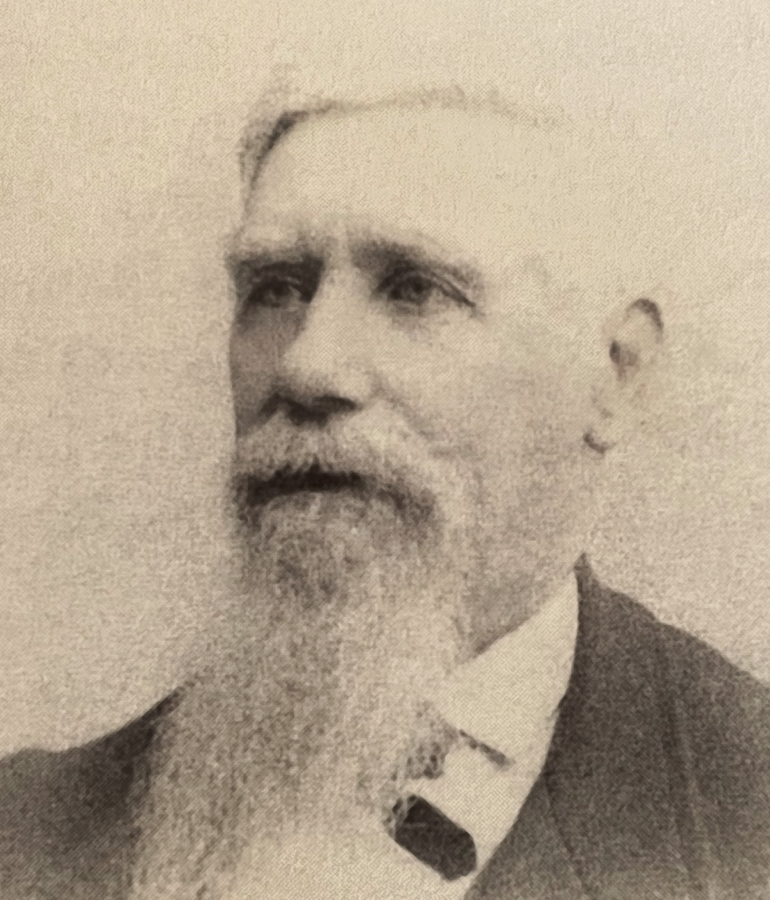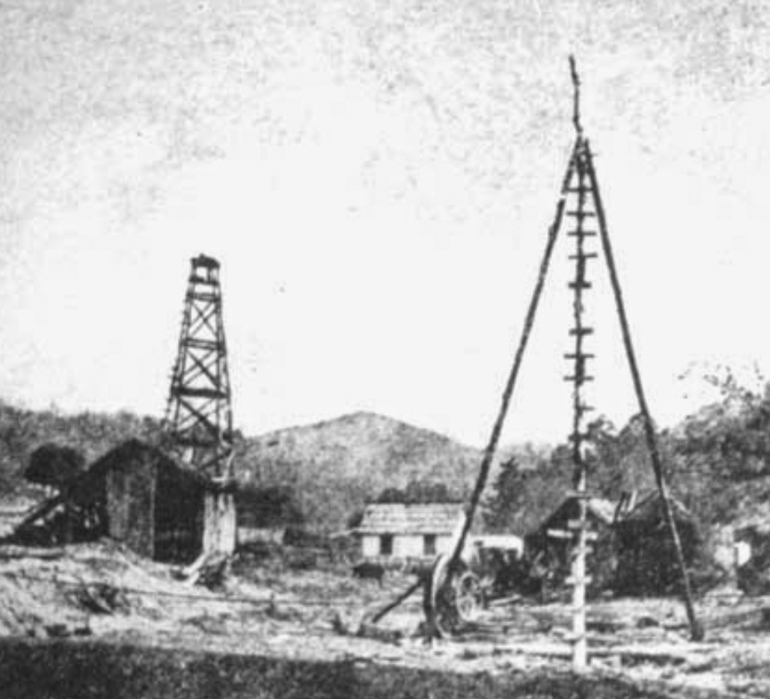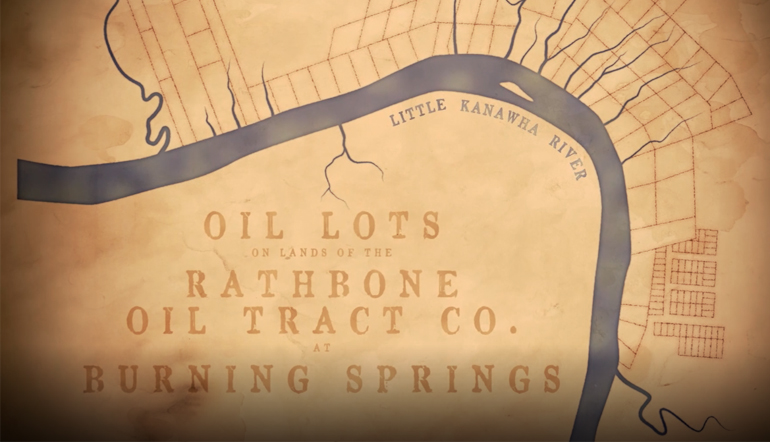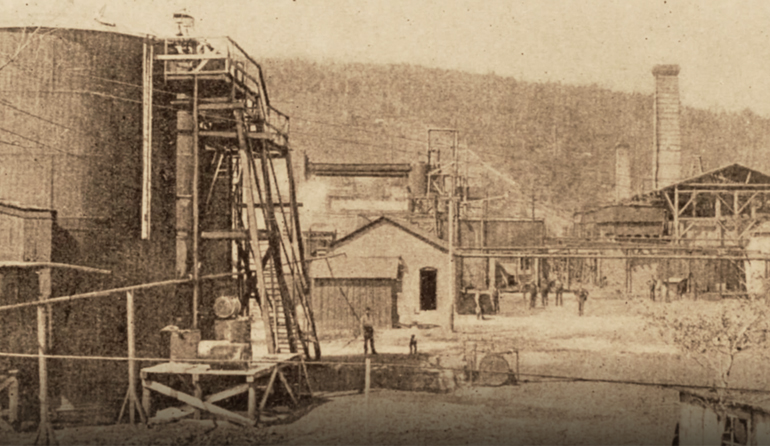John Castelli Rathbone
John Castelli (Cass) Rathbone was one of the sons of Wiliam P. Rathbone, a wealthy New York City judge and alderman who invested in a shipbuilding business. Following the financial crisis of 1837, John C. was sent west by his father to look for investment opportunities. John C. traveled to Kansas, stopping in Parkersburg on his way back to New York to visit his sister, Juliette, who was married to Peter G. Van Winkle. This visit would change the Rathbone family’s lives.
During his visit, John C. learned about the burning spring along the Little Kanawha. After inspecting the area, John C. returned to New York and convinced his father to invest in the area. William took his son’s advice, purchasing nearly 12,000 acres on which the Rathbones promptly developed into a small village with a grist mill, general store, and boat yard. To take advantage of the resources in the area, the Rathbones began engaging in timbering and then turned their sights to collecting oil from a well drilled in 1835, which was sold as a “cure all” medicine.
General Samuel D. Karns traveled to the Burning Springs and leased one acre including the salt and rock oil well from John V. Rathbone. The well gradually started producing oil, motivating the Rathbones to invest in drilling equipment.
The Rathbones Strike Oil
Brothers John C. and John V. Rathbone are credited with the first exclusively petroleum-drilled well in West Virginia at Burning Springs in 1859. The discovery started an oil rush.The famous Rathbone well produced 500 barrels per day. Following their success, many prospectors came to the Burning Springs area. The Rathbones seized the opportunity, surveying 600 acres of their property and leased them to the newcomers in one-acre parcels and retaining one-third production royalties.
By April 1861, the Rathbones were each earning $10,000 per day from their oil production, leases and royalties. One of the prospectors was Johnson N. Camden who, along with three other business men, secured two of the leases to search for rock oil. The business arrangement soon turned into a partnership called the Kanawha Burning Springs Company whose purpose was to lease more land to interested investors and prospectors. The Rathbones were also instrumental in developing transportation systems from Burning Springs to Parkersburg, including building locks and dams, roads, and railway systems to transport oil and supplies.
Raid on Burning Springs
On the night of May 9, 1863, the site was a target of Confederate raiders who set the oil field on fire, destroying equipment and structures. Boats with oil barrels exploded, sending burning oil into the Little Kanawha River, which became a sheet of flames.Much production was lost as a result of the raid. Investors turned their sights to more northern areas, which allowed Camden and the Rathbones to purchase property at Burning Springs that had been destroyed in the raid and reinvest in developing it.
Service in the Civil War
When the Civil War started, John C. Rathbone provided uniforms, horses, and equipment for the army at his own expense. He entered service for the Union and earned a commission as a colonel in the 11th West Virginia, which was forme by the Restored Government of Virginia to protect the B&O Railroad running through counties from Jackson County to Lewis County.Colonel Rathbone is famously known for surrendering in Spencer, Wst Virginia, to Brigadier General Albert G. Jenkins. Rathbone had suspected the Spencer would be under attack and had requested reinforcements. When Jenkins’ troops arrived, Rathbone feared his men were greatly out-numbered and surrendered the city without a fight. As a result, Colonel Rathbone was dismissed from service a few months later.
Of Note
Made West Virginia’s First Major Oil Discovery at Burning Springs
About the Images
The Rathbone well at Buring Springs
Locations of the Rathbone parcels at Buring Springs
An early oil refinery




